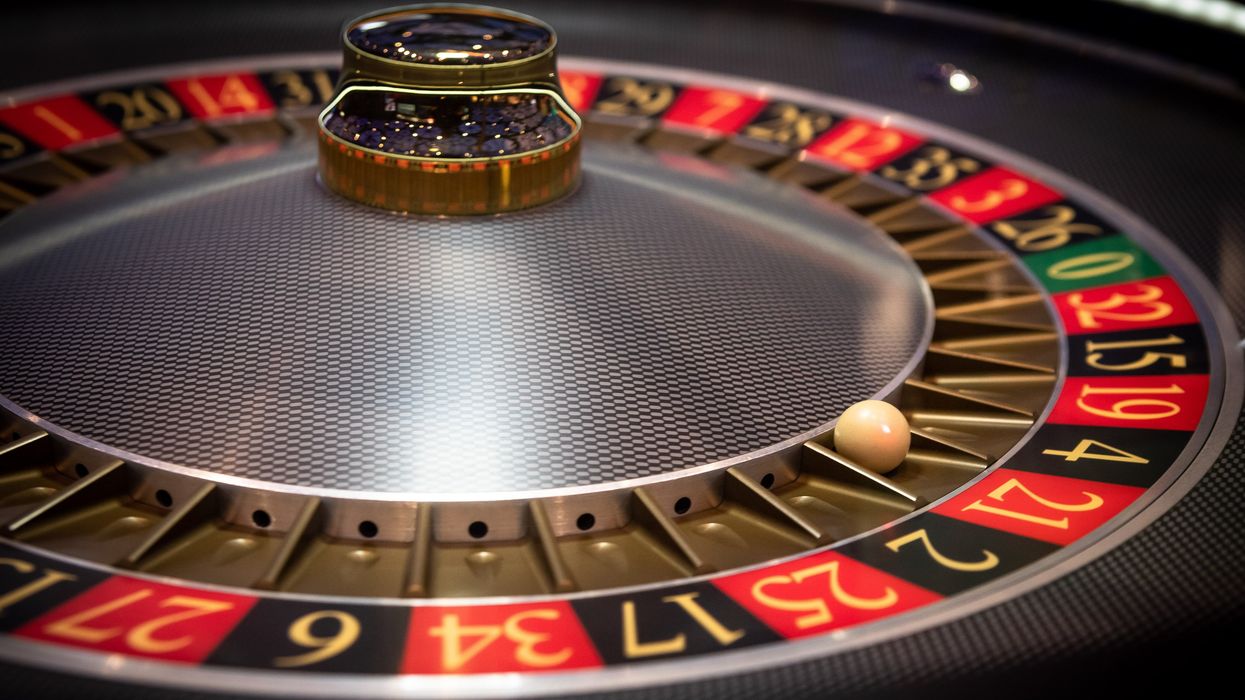Every four years, America faces the same question: who will win the presidential election?
Top political scientists and media companies devise elaborate polls, complex formulas, and sophisticated projections to calculate who will win the election at any given moment. Even Stu has thrown his hat in the ring with Plusecast, a one-stop shop for all your polling questions. But these methods aren't the only ways to predict who will be the next commander-in-chief.
From cookies to football, here are some unorthodox ways to predict the next president:
The Cookie Poll

Jeff Swensen / Stringer | Getty Images
Can cookies really predict the next president? According to Busken Bakery, they are more accurate than you might think.
Busken Bakery, has been using cookies to predict the winner of presidential elections since Regan beat Mondale in 1984, and has only been wrong once. Their method is simple: they sell cookies with the faces of both candidates and tally the sales of each. Whoever sells the most cookies is predicted to win. The simplicity of this method is its strength, and the only time it was wrong was the 2020 election. Currently, President Trump is far outstripping VP Harris, selling 23,477 cookies compared to her 8,781 cookies (as of 8/15). Busken posts daily updates on their Instagram, here.
Busken isn't the only bakery to make presidential predictions. Lochel's Bakery in the critical swing state of Pennsylvania has gained popularity recently. Lochel's has correctly predicted three of the last four elections by selling red and blue cookies printed with the names of the candidates. The current count for Lochel's is 28,212 for Trump and 2,097 for Harris. Again, Lochel's posts daily updates on their Instagram, here.
According to the cookies, this election is looking pretty sweet for President Trump!
Vegas Odds

Bloomberg / Contributor | Getty Images
It's time to put your money where your mouth is.
It's not just political scientists who cook up election predictions. Casinos and sports betting services get in on the action. What could be a better way to predict an election than by asking people to put their hard-earned dollars on the line?
The big casinos and sports betting sites all have odds on the election, and Trump tends to be the favored candidate. If you are unfamiliar with betting odds in the U.S., the simple explanation of how they work is the smaller the number the better the odds. Here is the spread for three of the big betting sites:
bet365- Trump: -138, Harris: +110
BetMGM- Trump: -137, Harris: +110
Caesars- Trump: -145, Harris: +120
While you shouldn't take this as a sign to put all your money (or any) on President Trump, it is an optimistic sign!
The Redskins Rule

The Washington Post / Contributor | Getty Images
The Redskins Rule is a well-documented correlation between the outcome of the presidential election and the performance of the Washington D.C. football team, the Redskins (now The Commanders). The rule is that if the Redskins win their last home game before the election, the incumbent party will win the election. If the Redskins lose, the challenging party will win the election. This rule is surprisingly accurate and held true for every election between 1940 and 2000.
If this rule is to be believed, the determining game is on Sunday, October 27th when the Redskins/Commanders play the Chicago Bears in Washington D.C. If the Bears win, that should mean Trump will win the election. If the Redskins win, then Harris will win.
But there is the fact that the rule has been broken several times since 2000. Has the charm worn off? And does it even count anymore if the team is no longer called the Redskins? Only time will tell!

 Harold M. Lambert / Contributor | Getty Images
Harold M. Lambert / Contributor | Getty Images
 Adam Gray / Stringer | Getty Images
Adam Gray / Stringer | Getty Images Anadolu / Contributor | Getty Images
Anadolu / Contributor | Getty Images Brandon Bell / Staff | Getty Images
Brandon Bell / Staff | Getty Images